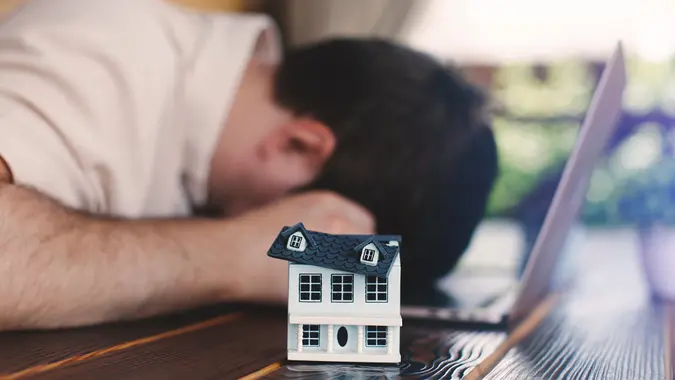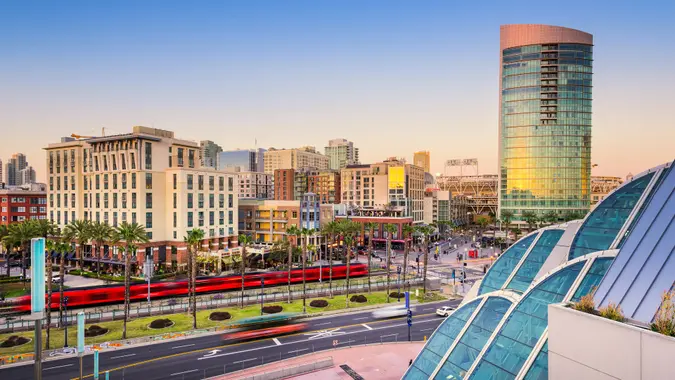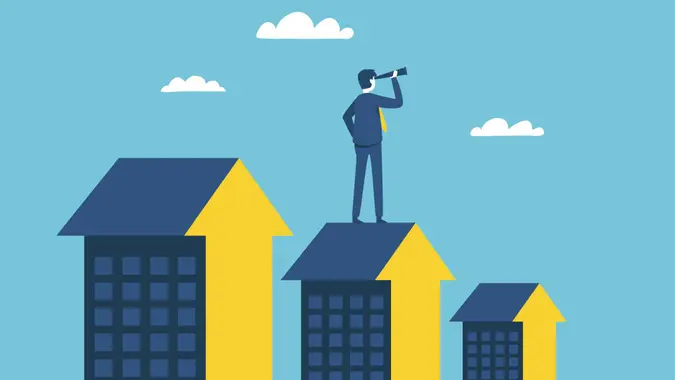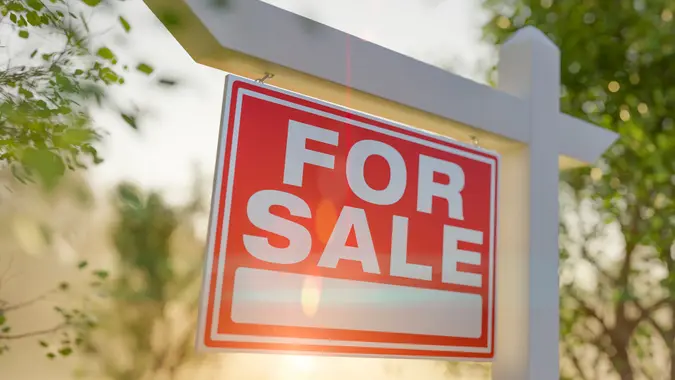6 Reasons the Housing Market Feels Impossible Right Now, According to Rachel Cruze

Commitment to Our Readers
GOBankingRates' editorial team is committed to bringing you unbiased reviews and information. We use data-driven methodologies to evaluate financial products and services - our reviews and ratings are not influenced by advertisers. You can read more about our editorial guidelines and our products and services review methodology.

20 Years
Helping You Live Richer

Reviewed
by Experts

Trusted by
Millions of Readers
If you’ve been feeling like buying a home is out of reach lately, you’re not alone. Home prices have outpaced middle-class incomes, housing supply is low and the general cost of living is through the roof. However, these aren’t the only factors affecting the national housing market.
In a recent video posted to her YouTube channel, financial expert Rachel Cruze broke down six key reasons the housing market feels tougher than ever.
The Fed Kept Rates Low in the 2010s
The Federal Reserve kept rates low in the 2010s to help offset the 2008 financial crisis, Cruze said. In late 2008, the Fed cut rates to near zero to give time for the economy to recover, and began increasing the target rate in December 2015, according to the Peter G. Peterson Foundation.
The Fed cut rates again in 2020 to bolster the U.S. economy during the pandemic, but pushed them up in 2022 as inflation surged to its highest level in decades in an effort to cool demand and bring prices under control. Since then, there have been several rate cuts, but it hasn’t done much to bring mortgage rates back down from the mid-6% range for a 30-year fixed-rate mortgage.
Although current interest rates are nowhere near record highs, they’re still much higher than the average mortgage rate of 3.6% in 2012, Cruze said.
Buyers at Risk of Becoming ‘House Poor’
As the housing market began to recover after the 2008 crash, banks started easing their lending standards, making it easier for buyers to qualify for home loans. According to Cruze, what can happen is if you have a budget to buy a house but you’re approved for more, people often overbuy and become house poor.
Cruze recommended going by the Ramsey Plan, which specifies that your mortgage payments should be no more than 25% of your take home pay on a 15-year fixed rate after putting at least 5% down on the house.
Housing Supply Shortage
There are more people buying houses than there are available on the market. Underbuilding has left the U.S. with a shortage of nearly four million homes, according to a new analysis from Realtor.com. At the current pace, closing the housing gap would take an estimated 7.5 years nationwide.
Remote Work on the Rise
As remote work became more common during the pandemic, it gave people the opportunity to move away from metro areas. “That means there was a big increase in competition, especially for young families in more metro suburban areas,” Cruze explained.
This is also why we saw home prices skyrocket, Cruze added, because people were looking for more space in the suburbs.
More Institutional Investors
Hedge fund companies, private equity firms and other institutional investors have bought up a large portion of the nation’s housing supply.
A 2024 U.S. Government Accountability Office (GAO) report found that in 2022, 32 institutional investors collectively owned 450,000 single-family homes, or roughly 2% of the single-family rental stock. However, they own a greater share of homes in certain markets. For instance, the GAO estimated institutional investors own up to 25% of Atlanta, Georgia’s single-family rental housing market.
Higher Cost of Living
Inflation, supply and demand and supply chain constraints during the pandemic helped push up the cost of living. In the real estate market, home builders were dealing with soaring material costs, labor shortages and long delays for essential supplies like lumber and appliances. These challenges increased the cost of new construction and slowed the pace of building. This made it even harder to meet the growing demand for housing.
 Written by
Written by  Edited by
Edited by 
























